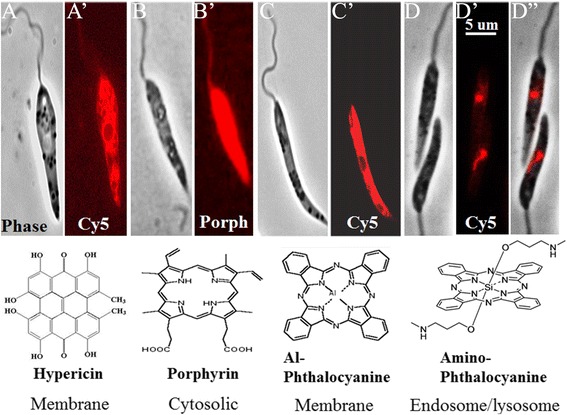Light is understood to excite photosensitizers (PS) to supply cytotoxic reactive oxygen species (ROS) within the presence of oxygen. This modality is enticing for designing control measures towards animal diseases and pests. Many PS have a confirmed security file. Also, the ROS cytotoxicity selects no resistant mutants, in contrast to different medication and pesticides.
Photodynamic remedy (PDT) refers back to the use of PS as gentle activable tumoricides, microbicides and pesticides in medication and agriculture.Here we describe “photodynamic vaccination” (PDV) that makes use of PDT-inactivation of parasites, i.e. Leishmania as whole-cell vaccines towards leishmaniasis, and as a common provider to ship transgenic add-on vaccines towards different infectious and malignant diseases.
The efficacy of Leishmania for vaccine supply makes use of their inherent attributes to parasitize antigen (vaccine)-presenting cells. Inactivation of Leishmania by PDT offers security for their use. This is completed in two other ways: (i) chemical engineering of PS to reinforce their uptake, e.g. Si-phthalocyanines; and (ii) transgenic approach to render Leishmania inducible for porphyrinogenesis. Three totally different schemes of Leishmania-based PDV are introduced diagrammatically to depict the mobile occasions leading to cell-mediated immunity, as seen experimentally towards leishmaniasis and Leishmania-delivered antigen in vitro and in vivo. Safety versus efficacy evaluations are below means for PDT-inactivated Leishmania, together with these additional processed to facilitate their storage and transport. Leishmania transfected to precise most cancers and viral vaccine candidates are being ready accordingly for experimental trials.We have begun to look at PS-mediated photodynamic pesticides (PDI).
Mosquito cells take up rose bengal/cyanosine, rendering them light-sensitive to bear disintegration in vitro, thereby offering a mobile foundation for the larvicidal exercise seen by the identical therapies. Ineffectiveness of phthalocyanines and porphyrins for PDI underscores its requirement for totally different PS.
Differential uptake of PS by insect versus different cells to account for this distinction is below examine.The ongoing work is patterned after the one-world approach by enlisting the participation of consultants in medicinal chemistry, cell/molecular biology, immunology, parasitology, entomology, most cancers analysis, tropical medication and veterinary medication.
The availability of multidisciplinary experience is indispensable for implementation of the required research to maneuver the mission toward product growth.

Forensic Entomology in Animal Cruelty Cases.
Forensic entomology may be helpful to the veterinary skilled in instances of animal cruelty. A fundamental utility of forensic entomology is to find out the minimal postmortem interval by estimating the time of insect colonization, primarily based on data of the speed of growth of pioneer colonizers and on insect species succession throughout decomposition of animal stays. Since insect growth is temperature dependent, these estimates require documentation of the environmental situations, together with ambient temperature.
It can even help within the detection and recognition of wounds, in addition to estimate the timing of durations of neglect. Knowledge of the geographic distribution of bugs that colonize animal stays might recommend that there was motion or concealment of the carcass or can create associations between a suspect, a sufferer, and a criminal offense scene.
In some situations, it might probably help within the detection of medication or toxins inside decomposed or skeletonized stays. During animal cruelty investigations, it might change into the accountability of the veterinary skilled to doc and gather entomological proof from dwell animals or through the necropsy.
The functions of forensic entomology are mentioned. A protocol is described for documenting and amassing entomological proof on the scene and through the necropsy, with extra emphasis on recording geographic location, meteorological information, and assortment and preservation of insect specimens.
